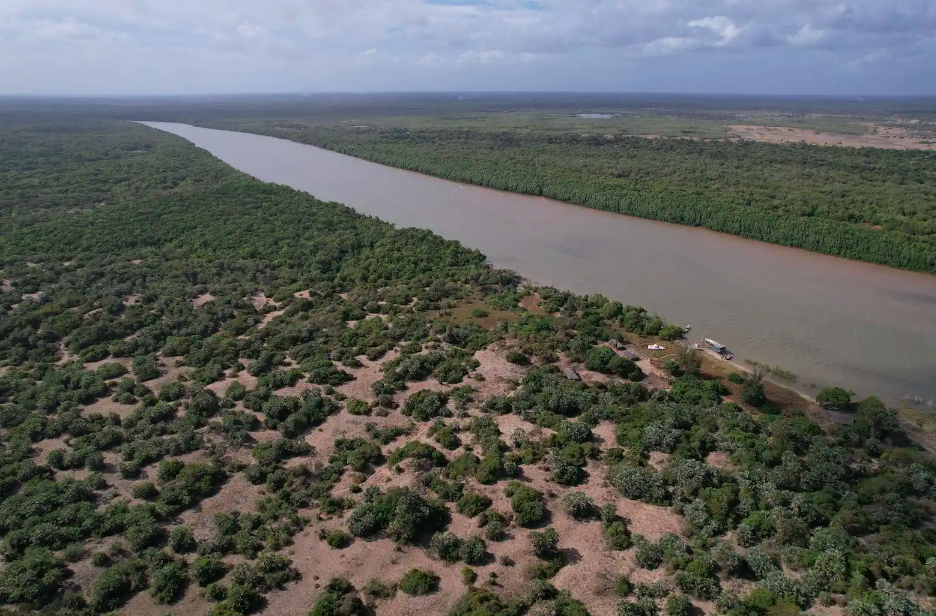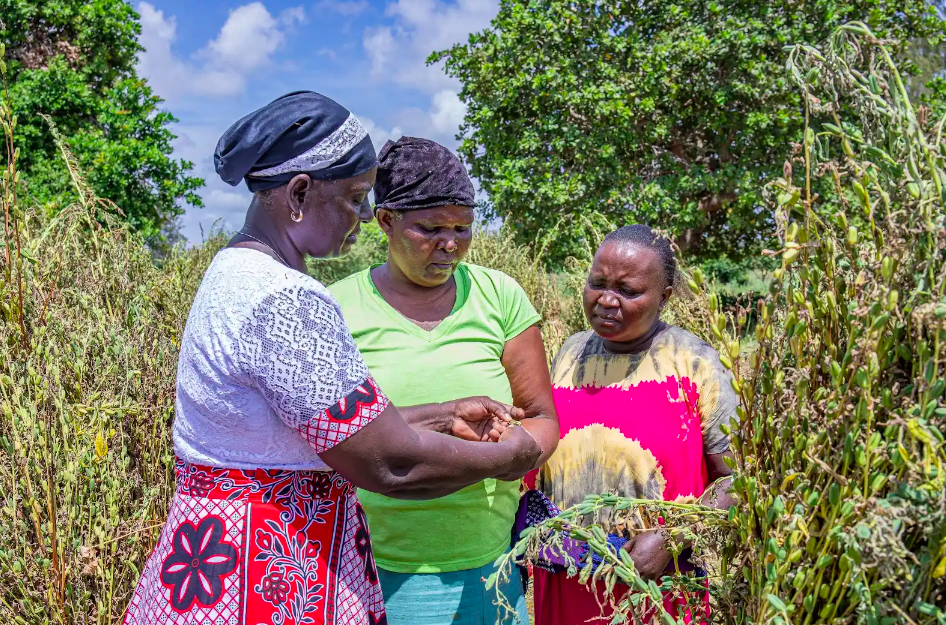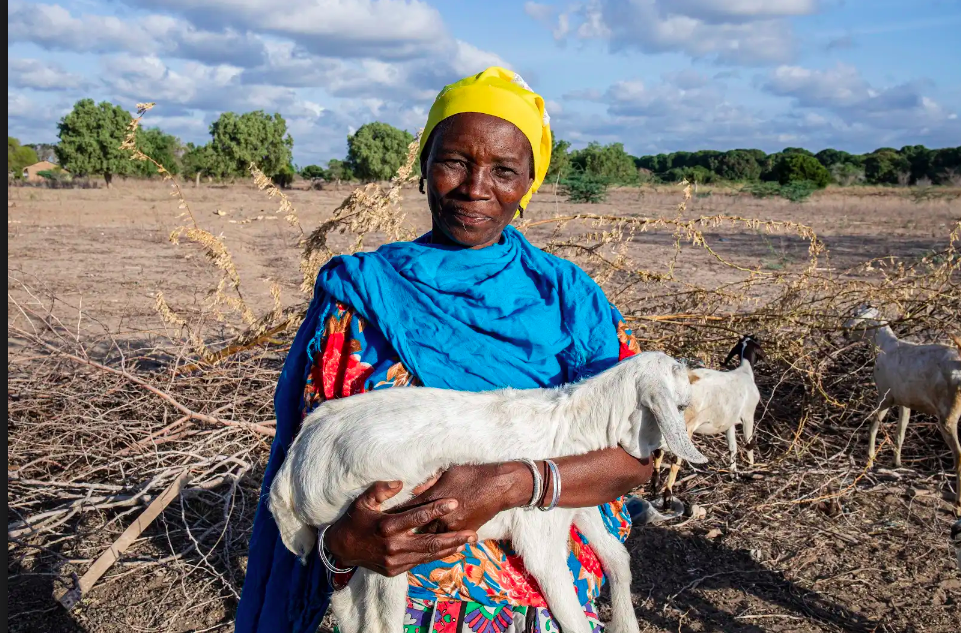 An aerial view of the Tana Delta. Photo/ Courtesy.
An aerial view of the Tana Delta. Photo/ Courtesy.
Said Nyara reads the Tana Delta as an open book, its
riverways and wildlife seared onto his very psyche. In the Ozi village, where
the Tana River finally succumbs to the arms of the Indian Ocean, Said is not
merely an autodidact botanical expert or a treasured guide, but a passionate,
stubborn patriot of his fatherland.
"This delta always gave to us," he murmurs, his voice a calming whisper over the rustling orchestra of mangroves. "Agriculture, fishing, grazing… our lifeblood. Today," he pauses, the shadow crossing his face, "it is crying."
Salt intrudes now onto once fertile grounds, a cruel reminder of shifting weather. Rivers, once blood-giving vessels, vanish in the parched earth before ever reaching the ocean. The rains, once regular callers, now are fickle guests.
The land, a jewel in Kenya's biodiversity crown, is threatened by environmental change as much as it is by the blunt instrument of unsustainable development.
But in this speeding crisis, a powerful counter-narrative is taking hold, driven by Said and a growing chorus of resilient people who see not collapse, but a precious second chance.
An amazing revolution is afoot, fuelled by Nature Kenya's commitment and the spirit of cooperation of the Lamu and Tana River County Governments. People are resisting, empowered by an extraordinary mix of science, robust culture, and stubborn resolve. And their weapon of choice? The Green Heart Project – a decade-long initiative expertly designed to wed prosperity and sustainability in one of Kenya's most environmentally sensitive landscapes.
Imagine over 28,000 hectares earmarked for people-focused, sustainable development. It is not an aid initiative; it is a revolution from the ground up, a "green boots" campaign that is bringing life to the Delta.
 Farmers in the Tana Delta harvest simsim. Photo/Courtesy
Farmers in the Tana Delta harvest simsim. Photo/Courtesy
Green pastures will fund beef production, which feeds
into a new Garsen meat-processing factory to generate over Sh4 billion a year
on the premium "Green Heart" brand. Sun-baked lands are reserved for
vegetable farming, with the promise of an incredible Sh4.3 billion each year
from tomatoes, kale, onions, and cassava. Paddy fields will once more be green,
yielding an estimated Sh500 million each year, alongside fruit orchards
brimming with mangoes, bananas, and papayas, yielding an estimated Sh1.2
billion each year.
And this vision is already literally changing lives, one empowered citizen at a time.
Simon Ndima is a chilli farmer whose one acre now earns Sh60,000 every week, a far cry from the unpredictable pay of the past. Maliam Miyesa began with a free incubator and some chicks too. Now she is the proprietor of a thriving 700-head poultry enterprise, a tangible reality of her hard work and success of the project. She has a house and has just purchased a car – tangible symbols of a transformed life.
"I planted maize and just hoped for the rain," remembers Ali Dido (pictured tending to sunflowers), one of the recipients, his voice charged with emotion. "I plant sunflower, cassava, and fruit trees now – and I earn money year-round." This shift towards climate-resilient agriculture, along with expert guidance, is not only holding the Tana Delta together; it's building it up.
What truly distinguishes the Green Heart Project is its dedication to a people-first ethos. Steering clear of large-scale, top-down approaches, the project actively diffuses risk and wealth via small-scale, locally controlled businesses. And the knock-on benefits are spreading. "Our agricultural initiatives are unequivocally raising yields, reducing emissions, and significantly increasing income for local communities," explains Rudolf Makhanu, Nature Kenya's Ecosystem Restoration Manager.
Dr Paul Matiku, Nature Kenya's Executive Director, points to the integrated vision: "This is really about reconciling livelihoods and landscapes. We are showing that it is actually possible to love people and the planet in one breath."
Above all, the vision is accompanied by government policy that is finally being put in place with diligent oversight by regulators. "We need to multiply these outstanding success stories – in crop production and eco-tourism, through livestock and even honey production," emphasises Kennedy Olwasi, Deputy Director, Ministry of Environment. "It is green business in action, and it is working demonstrably."
 Beatrice Zawadi displays a Gala goat breed in the Tana Delta.
Beatrice Zawadi displays a Gala goat breed in the Tana Delta.
At the county level too, the commitment is steadfast.
"Conservation is not a barrier to progress; it opens doors – for jobs, for
peace, for genuine prosperity," states Mwanajuma Hiribae, Tana River
County Secretary. "We are all wholeheartedly invested in this."
The Green Heart Project's success extends to the realm of beekeeping, a model strategic partnership that pays off. Nature Kenya recognised the economic obstacles keeping many communities away from embracing this sustainable lifestyle. They stepped in, providing the initial investment in beehives that was crucial. But technical know-how and necessary on-the-ground management come from African Beekeepers Limited, under the management of their Managing Director, Ernest Simeoni.
"We have a direct stake in the complex management of the beehives," explains Simeoni, pointing to the harmony between the two organisations. "The community supplies the necessary land and adds critical labour, especially protecting the hives. This collaborative effort creates a high level of ownership and assures the long-term sustainability of these honey-producing ventures. It's not a matter of sharing hives; it's a matter of creating prosperous, locally-operated businesses." This collaboration ensures that the beekeeping enterprises are not handouts but sustainable sources of income anchored in local engagement and informed by expert expertise.
Despite the material success, Said Nyara is deeply concerned. "There are references to vast sugarcane plantations," he alludes. "Such a project may compromise all that we have taken great pains to build."
Instead, Said envisions a different kind of development, one that is organically linked to the Delta's natural beauty. He envisions a 30-room eco-lodge, owned and operated by the community. "With a relatively modest investment of just Sh5 million," he says, "we could create many jobs, provide strong protection to this valuable land, and show the entire country the real, sustainable potential of the Tana Delta."
By 2030, the statistics forecast the establishment of 19,000 new jobs and value worth Sh8.7 billion. But these numbers themselves do not paint the complete picture of this change. They don't depict the silent pride that glows in Maliam's eyes, the strong grip of hope in Simon's handshake, or the unshakeable flame in Said's voice as he looks out across the Delta towards sunset. We are not asking for much," he says, eyes fixed on the horizon. "Just a chance to do it right."











